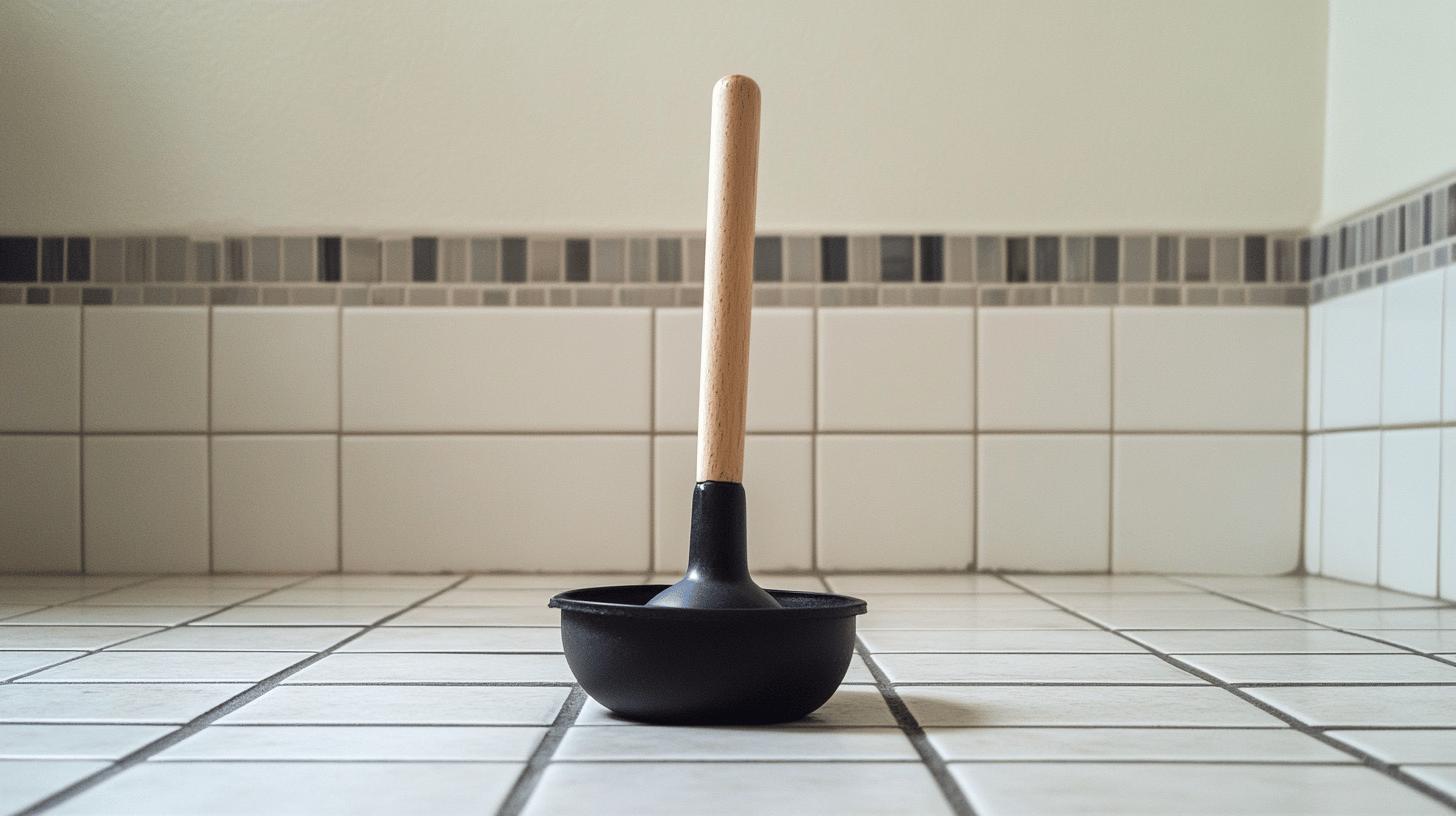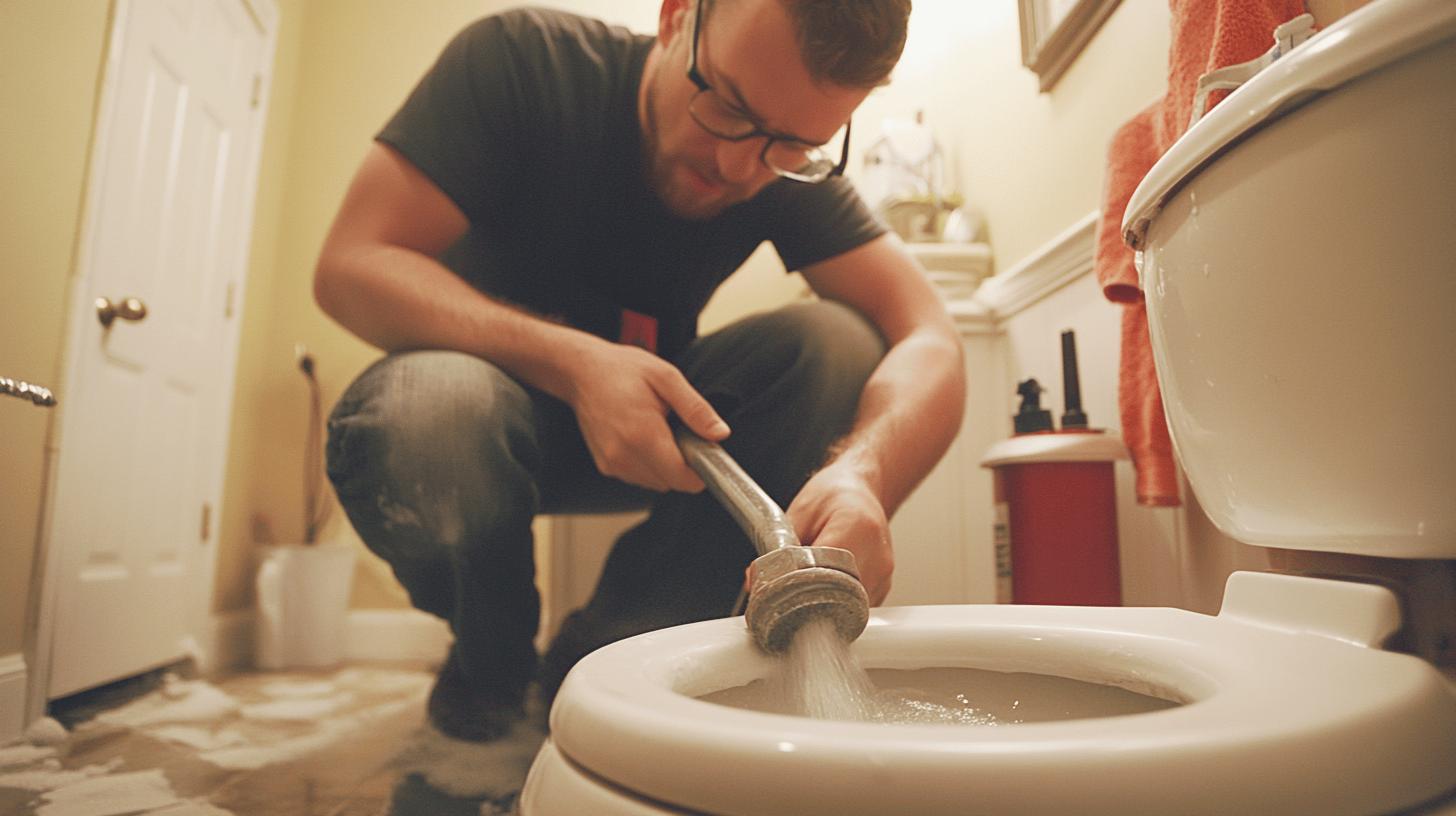TL;DR:
- Sink Plungers: Use for sinks, bathtubs, showers. Features a rubber cup and long handle; creates suction to clear clogs.
- Toilet Plungers: Best for toilets; has a flange for a snug fit and effective suction.
- Usage Tips: Ensure water covers the rubber cup/flange, use correct technique (press and pull sharply).
- Choose Wisely: Sink plungers for flat surfaces; toilet plungers for toilets only to avoid poor results.
- When to Call a Pro: Persistent clogs may need expert tools (taze plungers, drain augers) and advice on prevention.
Taking a closer look at bathtub plungers has given us some key insights into handling common drainage problems. From cup to flange plungers, choosing the right one is crucial for getting the job done right. Knowing how to plunge properly makes clearing clogs easier, and recognizing when it’s time to call in a professional can save you time and effort. By understanding what causes clogs and taking steps to prevent them, you can keep your bathroom plumbing running smoothly. A little effort now can lead to a lot less hassle later on.
Sink Plunger vs Toilet Plunger: Which Works Best?
Sink plungers, or cup plungers, are basic tools with a rubber cup and a long handle. They’re perfect for flat surfaces like sinks and bathtubs. To use one, just cover the drain, press down to build pressure, and then pull up to create suction that loosens the clog. This simple design is great for clearing blockages in flat-surfaced drains.
Use a sink plunger for:
- Kitchen sinks
- Bathroom sinks
- Bathtubs
- Shower drains
- Laundry sinks
To use a sink plunger effectively, start by ensuring the rubber cup is submerged in water, which helps create a seal for suction. Cover the overflow drain with a towel or wet rag to focus pressure on the main drain. Place the plunger over the clog, press down gently, and then pull up sharply several times. This technique, combined with proper coverage of the overflow, is key to clearing the clog successfully.
Exploring Toilet Plungers and Their Applications

Toilet plungers, also known as flange plungers, are designed specifically for toilets. They feature a fold-out flange at the bottom, which creates a tight seal in the toilet drain for better suction and effective clog removal. With a rubber cup and long handle, they provide the pressure and leverage needed for powerful plunging.
To use it correctly, make sure there’s enough water in the toilet to cover the flange and create a good seal. Place the plunger over the drain, press down gently, and then pull up sharply several times. Repeat until the water drains properly. Using the right technique and tool ensures the best results.
|Feature |Description |
|—————-|———————————————–|
|Flange Design |Fits snugly in toilet drains for effective suction|
|Rubber Cup |Creates seal for pressure and suction |
|Long Handle |Provides leverage and control |
Comparing Sink Plungers and Toilet Plungers
Understanding the differences between sink and toilet plungers is crucial for success in unclogging. Sink plungers, with their simple cup design, are best for flat surfaces like sinks, creating suction to clear blockages. Toilet plungers, on the other hand, have a unique flange that forms a tight seal in toilet drains, making them more effective for toilets.
Using the wrong plunger can lead to frustration. A sink plunger might not seal well in a toilet, leaving the clog intact, while a toilet plunger might not generate enough suction on a flat surface. Always choose the right plunger for your specific clog to ensure the best results.
- Identify fixture type before choosing a plunger
- Use sink plungers for flat surfaces and drains
- Use toilet plungers for toilet-specific clogs
- Consider plunger design for optimal performance
Choosing the right plunger is key to saving time and avoiding plumbing problems. Using the correct type reduces the risk of damaging your fixtures and increases the chances of clearing the clog effectively. Each plunger is designed for specific fixtures, so knowing the pros and cons of each helps ensure the best results for your plumbing needs.
Professional Plumbers: The Ultimate Solution for Persistent Clogs

When should you call a plumber? If DIY methods aren’t working, it’s time to get expert help. Persistent clogs often mean there are bigger issues that need professional attention. Ignoring them can lead to costly damage down the line.
Plumbers use specialized tools like drain augers and high-pressure machines to handle tough clogs that household plungers can’t reach. These tools are designed to clear blockages thoroughly, ensuring your plumbing system works smoothly.
Professionals don’t just fix problems—they also offer valuable advice to prevent future clogs. By evaluating your plumbing system, they can suggest maintenance tips to keep everything running efficiently, saving you from potential emergencies and helping your system last longer.
Final Words
Choosing between a sink plunger and a toilet plunger depends on their specific designs and what you need to unclog. Sink plungers are great for flat surfaces like kitchen and bathroom sinks, while toilet plungers, with their flange, are designed for toilets. Using the right plunger ensures you clear clogs effectively and avoid plumbing issues.
When stubborn clogs persist, professional plumbers have the tools and expertise to provide long-lasting solutions. By using the correct plunger and knowing when to call in an expert, you can keep your plumbing running smoothly and prevent future blockages.
FAQ
Can I use a sink plunger for the toilet?
Using a sink plunger for a toilet is not recommended. The design, specific to flat surfaces, lacks a flange, which is crucial for effective toilet drain sealing and suction.
Are sink plungers any good?
Sink plungers work well on flat surfaces like kitchen and bathroom sinks, bathtubs, and shower drains. Their cup design creates the suction needed to clear minor clogs effectively.
What type of plunger is best for sinks?
The best type of plunger for sinks is the cup plunger. Its design is meant for flat surfaces, helping to effectively create the suction needed to clear clogs.
What can I use instead of a sink plunger?
For minor sink clogs, alternatives to a sink plunger include a drain snake, baking soda and vinegar solution, or a wet/dry vacuum, which can help dislodge trapped debris.
Sink plunger vs toilet plunger size
Sink plungers often have a smaller, flat cup, while toilet plungers feature a larger cup with an extra flange. These design differences cater to specific fixtures for optimal clog removal.
Best type of plunger for toilet
The flange plunger is best for toilets as its design forms a tight seal inside the toilet drain, providing the suction needed to clear blockages effectively.
Can I use a sink plunger on a toilet?
Using a sink plunger on a toilet is generally ineffective due to its flat cup design lacking a flange important for sealing toilet drains properly.
Flange plunger
A flange plunger is tailored for toilet clogs, featuring a fold-out flap on its rubber cup to create a tight seal within the toilet drain for effective clog removal.
Sink plunger vs toilet plunger price
Sink plungers and toilet plungers are generally affordable, with prices influenced by brand and design. On average, they range from $5 to $20 each.
Kitchen sink plunger
A kitchen sink plunger is a type of cup plunger suitable for unclogging flat-bottomed surface drains in kitchen sinks, effectively creating suction to clear minor blockages.

